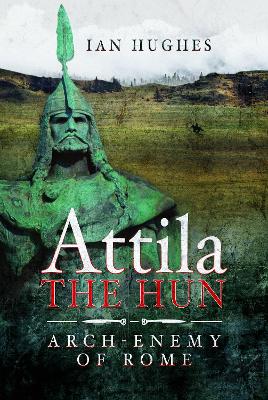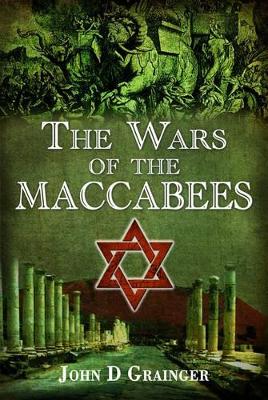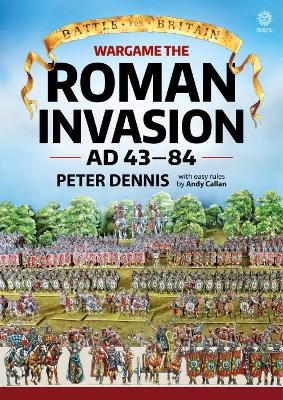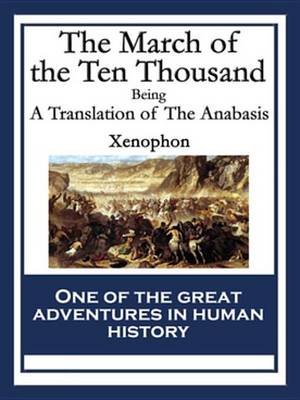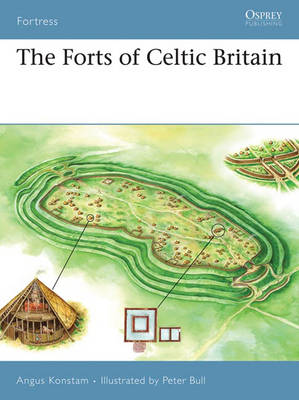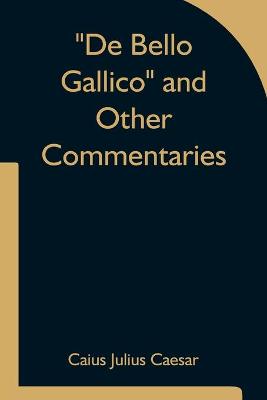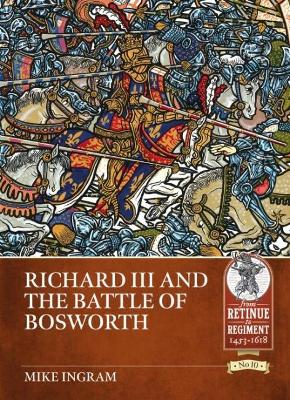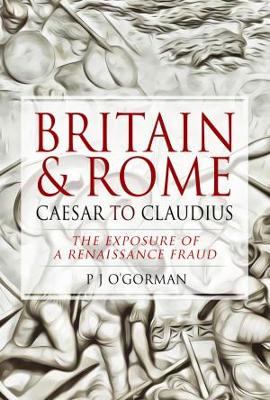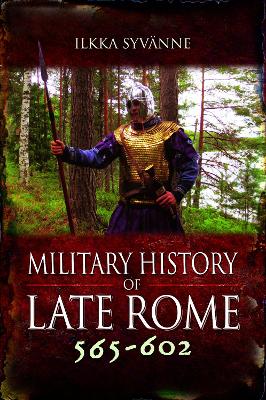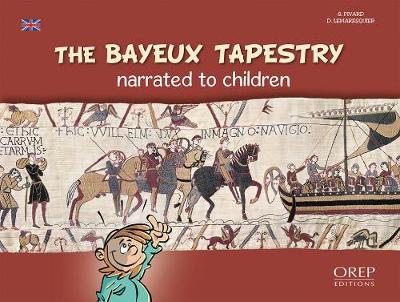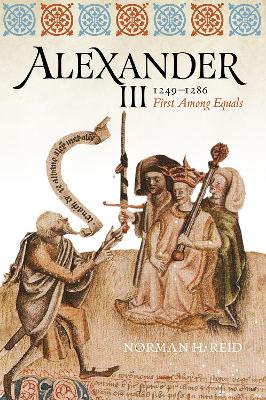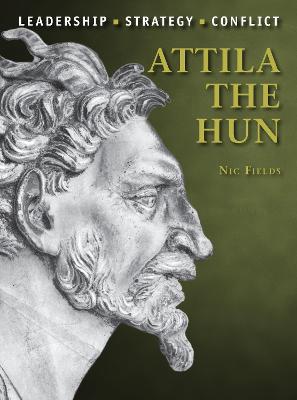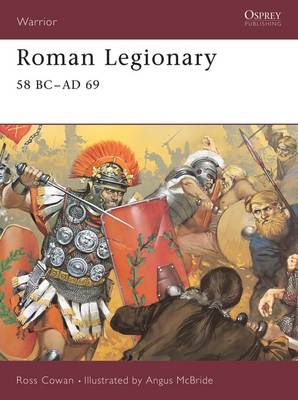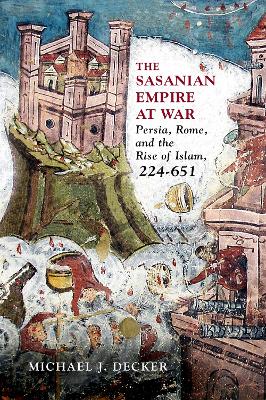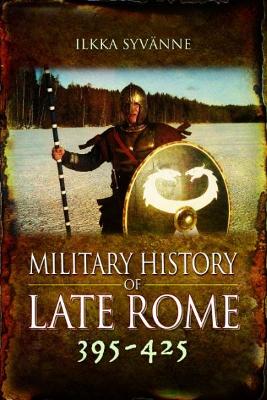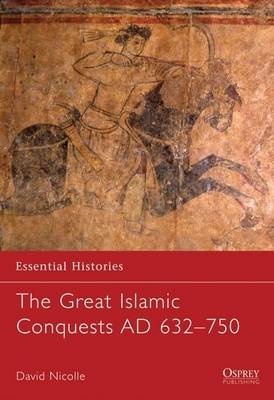Attila the Hun is a household name. Rising to the Hunnic kingship around 434, he dominated European history for the next two decades. Attila bullied and manipulated both halves of the Roman empire, forcing successive emperors to make tribute payments or face invasion. Ian Hughes recounts Attila's rise to power, attempting to untangle his character and motivations so far as the imperfect sources allow. A major theme is how the two halves of the empire finally united against Attila, prompting his...
By the early second century BC, Israel had long been under the rule of the Hellenistic Seleucid Empire. But the policy of deliberate Hellenization and suppression of Jewish religious practices by Antiochus IV, sparked a revolt in 167 BC which was led initially by Judah Maccabee and later by his brothers and their descendants. Relying on guerrilla tactics the growing insurrection repeatedly took on the sophisticated might of the Seleucid army with mixed, but generally successful, results, establi...
The Black Prince and the Capture of a King
by Marilyn Livingstone and Morgen Witzel
The capture of a king in the course of a battle was a relatively rare event. This, the climactic event of the Black Prince's first campaign as commander, came at the end of nearly a year of campaigning across the southwest of France. The battle of Poitiers in 1356 is less well known than more famous clashes such as Agincourt, however, Poitiers was no less dramatic, and equally important in terms of the course of the Hundred Years War. The capture of King Jean brought France to the brink of tot...
Wargame: the Roman Invasion Ad 43 (Battle for Britain)
by Peter Dennis
In the Battle for Britain series, well-known historical illustrator Peter Dennis breathes life back into the 19th century paper soldier, supplying all the artwork neede to create the armies which struggled for supremacy through our island history. Here, the Legions of Rome and the fierce Celtic inhabitants of Britannia can clash again using simple rules from veteran wargamer Andy Callan. This source book shows you how to copy and make any number of colourful and durable stands of troops using t...
A good argument could be made that the Battle of Actium was the most significant military engagement in Roman history. On a bright September day, the naval forces of Octavian clashed with those of Antony and Cleopatra off the coast of western Greece. The victory Octavian enjoyed that day set the state for forty-four years of what would come to be known as the Augustan Peace, and was in no small way the dawn of the Roman Empire. Yet, despite its significance, what exactly happened at Actium has...
Half a millennium before the Romans first arrived in Britain an even more ferocious people, the Celts, arrived in what is now south-eastern England. The Celts remained in Britain long after the Romans departed, and although driven into the remoter corners of the island by English invaders the people who remained clung onto their Celtic heritage, and defended their remaining lands against all-comers. In order to defend their lands from other tribes or outside invaders, these people established po...
The history of the 'barbarian' peoples of Europe is filled with dramatic wars and migrations along with charismatic and often farsighted leaders. Inevitably, their greatest challenge was their struggle with the renowned military might of Rome. Even when outnumbered and faced by better equipped and trained Roman legions, the barbarians could inflict devastating defeats upon Rome. Though sometimes fickle in battle, the barbarian warrior was capable of reckless bravery. The Romans themselves admire...
Richard III and the Battle of Bosworth (Retinue to Regiment)
by Mike Ingram
This is the story of two very different men, Richard III, the last Plantagenet King of England, and Henry Tudor and how they met in battle on 22 August 1485 at Bosworth Field. The Battle of Bosworth, along with Hastings and Naseby, is one of the most important battles in English history and, on the death of Richard, ushered in the age of the Tudors. This book, using contemporary sources, examines their early lives, the many plots against Richard, and the involvement of Henry's mother, Margaret...
'I am Josephus...I myself fought against the Romans' In August of AD 70 the city of Jerusalem was destroyed by Roman forces after a six-month siege. This was the disastrous outcome of a Jewish revolt against Roman domination which began in AD 66 with some early success, but soon became mired in factional conflict. The war ended in the destruction of the famous Jewish Temple (rebuilt by Herod the Great a century before). The remarkable story of the war is narrated by an eye-witness and part...
This is a bold reassessment of one of the pivotal points in British history. PJ O'Gorman analyses the sources for the period from Julius Caesar's first forays into these islands to the invasion under the Emperor Claudius and the conclusions he reaches are nothing short of radical and call into question much of the accepted narrative of Roman invasion and conquest. The author starts by showing that Caesar's initial cross-Channel adventures were motivated not so much by seeking the glory of tamin...
Military History of Late Rome 565-602 provides a new fresh analysis of the Roman Empire in the aftermath of the reconquests of Justinian I (527-65). It is often claimed that Justinian overstretched the Roman resources, but this analysis proves that view wrong. It demonstrates that the initial troubles were largely the result of the mistakes of Justin II (565-78) and that his successors, Tiberius II (578-82) and Maurice (582-602), not only restored its fortunes but were, at the time of the death...
The Thracians 700 BC–AD 46 (Men-at-Arms, #360)
by Christopher Webber
For seven hundred years the fierce tribesmen of Thrace dominated a huge stretch of territory between the Danube, the Black Sea and northern Greece. Skilled in light infantry warfare and renowned as cavalrymen, they both resisted, and later served as mercenaries for, all the great regional powers from Persia and Athens to Alexander of Macedon and the Roman emperors. This book brings to light the recent archaeological discoveries which allow a fuller reconstruction of these colourful warriors than...
_The Art of Renaissance Warfare_ tells the story of the knight during the fifteenth and sixteenth centuries from the great victories of Edward III and the Black Prince to the fall of Richard III on Bosworth Field. During this period, new technology on the battlefield posed deadly challenges for the mounted warrior; but they also stimulated change, and the knight moved with the times. Having survived the longbow devastation at Cr cy, Poitiers and Agincourt, he emerged triumphant, his armour ligh...
The Bayeux Tapestry is one of the world's unique masterpieces and attracts a huge number of enthusiastic visitors each year. It can be considered to be one of the very first comic strips that history has ever known. Its story is told in a simple manner and accompanied by a few framed illustrations was bound to charm a young readership. That's precisely what the primary school teacher, Gilles Pivard and the art teacher, David Lemaresquier have tried to do. Let's hope that their young readers will...
Winner of the Saltire Society Scottish History Book of the Year 2019 Presiding over an age of relative peace and prosperity, Alexander III represented the zenith of Scottish medieval kingship. The events which followed his early and unexpected death plunged Scotland into turmoil, and into a period of warfare and internal decline which almost brought about the demise of the Scottish state. This study fills a serious gap in the historiography of medieval Scotland. For many decades, even centuri...
One of the most powerful men in late antiquity, Attila’s peerless Hunnic empire stretched from the Ural mountains to the Rhine river. In a series of epic campaigns dating from the AD 430s until his death in AD 453, he ravaged first the Eastern and later the Western Roman Empire, invading Italy in AD 452 and threatening Rome itself. Lavishly illustrated, this new analysis of his military achievements examines how Attila was able to sweep across Europe, the tactics and innovations he employed and...
The period 31 BC-AD 43 saw the greatest expansion of the Roman Empire. In 31 BC Octavian defeated Antony at the Battle of Actium and remodelled the semi-professional Roman army into a permanent force of 28 legions. Octavian became the first emperor (Augustus) and under his leadership the legions conquered northern Spain, all Europe south of the Danube line and Germany west of the Elbe. The legionaries exemplified the heroic culture of the Roman world and this title takes a behind-the-scenes look...
This ambitious series gives the reader a comprehensive narrative of late Roman military history from 284-641. Each volume gives a detailed account of the changes in organization, equipment, strategy and tactics among both the Roman forces and her enemies in the relevant period, while also giving a detailed but accessible account of the campaigns and battles. The Military History of Late Rome Volume 3 analyses in great detail the pivotal years of 395-425. It was then that the mighty Roman Empir...
The Great Islamic Conquests AD 632–750 (Essential Histories, #71)
by David Nicolle
Few centuries in world history have had such a profound and long-lasting impact as the first hundred years of Islamic history. In this book, David Nicolle examines the extensive Islamic conquests between AD 632 and 750. These years saw the religion and culture of Islam erupt from the Arabian Peninsula and spread across an area far larger than that of the Roman Empire. The effects of this rapid expansion were to shape European affairs for centuries to come. This book examines the social and milit...
